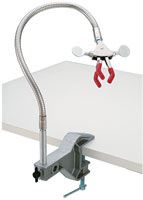| The Home page of ILPI's Safety Data Sheet (SDS) Resource, the leader in SDS information since 1995! | |
| The history and philosophy behind this resource. | |
| A curated collection of books and reference materials concerning Safety Data Sheets and closely related topics. | |
| Paste your plain text SDS into the SDS-Demystifier, and it will be converted into a hypertext-enriched document with links to detailed explanations of each key term. | |
| An extensive list of frequently asked questions about Safety Data Sheets including regulations, content, compliance, and more. | |
| A humorous take on Safety Data Sheet jargon. Fill in the blanks on our entry form to generate a personalized Unsafety Data Sheet to share with your coworkers. | |
| Since 1995, we've maintained this massive curated list of the best places to find Safety Data Sheets on the Internet. | |
| Way more than a glossary, this hypertext-enhanced resource covers hundreds of SDS-related terms and expert knowledge. Each entry includes both the SDS relevance and links to additional authoritative resources. | |
| Archived results of Safety Data Sheet related polls taken by some of our millions of site visitors | |
| You are here! The OSHA regulations behind SDS regulations, including the inspection guidelines and over 400 official interpretations letters under the Hazard Communication Standard | |
| Commercial suppliers of SDS authoring and management software as well as cloud compliance services. | |
| Commercial companies that will create SDS's for your specific needs as well as SDS translation companies. |

Safety signs, banners, and scoreboards? Get yours at Safety Emporium!
| Title: 09/16/2008 - Whether written programs may be kept solely in an electronic format. | |
| Record Type: Interpretation | Standard Number: 1910.146(c)(4), 1910.1030(c)(1)(i), 1910.1030(c)(1)(iii), 1910.1200(e)(1), 1910.1200(e)(4) |
OSHA requirements are set by statute, standards and regulations. Our interpretation letters explain these requirements and how they apply to particular circumstances, but they cannot create additional employer obligations. This letter constitutes OSHA's interpretation of the requirements discussed. Note that our enforcement guidance may be affected by changes to OSHA rules. Also, from time to time we update our guidance in response to new information. To keep apprised of such developments, you can consult OSHA's website at https://www.osha.gov
September 16, 2008
Mr. John S. Ingram
ESIS Inc. - Global Risk Control Services
436 Walnut St, WA10B
Philadelphia, PA 19106
Dear Mr. Ingram:
Thank you for your April 8, 2008 letter regarding the requirements of various standards for a written program. Your letter specifically asks whether written programs may be kept solely in an electronic format. This letter constitutes OSHA's interpretation only of the requirements discussed and may not be applicable to any question not delineated within your original correspondence.
As you pointed out in your letter, a number of standards require programs that are written and accessible to all employees on site. Examples of these provisions are 29 CFR 1910.1030(c)(1)(i) and 1910.1030(c)(1)(iii) (bloodborne pathogens), 29 CFR 1910.1200(e)(1) and 1910.1200(e)(4)(hazard communication), and 29 CFR 1910.146(c)(4) (permit-required confined spaces). Traditionally, these programs have been kept in separate binders in appropriate work areas in order to comply with the standards. Maintaining multiple copies of these manuals can be both challenging and time-consuming.
You have also stated that placing safety materials, programs, checklists, and forms on a company intranet can provide significant benefits in consistency, ease of use, and accuracy in maintaining and updating these materials in a timely manner. And, just as hard copy programs can be photocopied upon request, so can an electronic version be printed out upon request.
Computers are much more common in the workplace now than when most OSHA standards were written. We agree that in many instances electronic access to programs could be beneficial. Therefore, OSHA would allow a written program to be in either paper or electronic format, as long as the program meets all other requirements of the standard in question.
Where the standard requires that the written program must be made available to employees, the employer must ensure that employees know how to access the document and that there are no barriers to employee access.
Thank you for your interest in occupational safety and health. We hope you find this information helpful. OSHA requirements are set by statute, standards, and regulations. Our interpretation letters explain these requirements and how they apply to particular circumstances, but they cannot create additional employer obligations.
This letter constitutes OSHA's interpretation of OSHA rules. Also, from time to time we update our guidance in response to new information. To keep apprised of such developments, you can consult OSHA's website at https://www.osha.gov. If you have any further questions, please feel free to contact the Office of Health Enforcement at (202) 693-2190 or our Chicago North Area Office at (847) 803-4800.
Sincerely,
Richard E. Fairfax, Director
Directorate of Enforcement Programs
The original official public domain version of this document is available from OSHA at https://www.osha.gov/laws-regs/standardinterpretations/2008-09-16-0.

